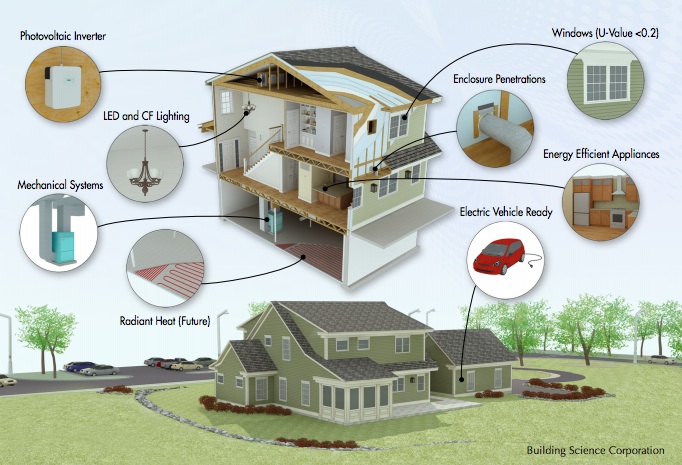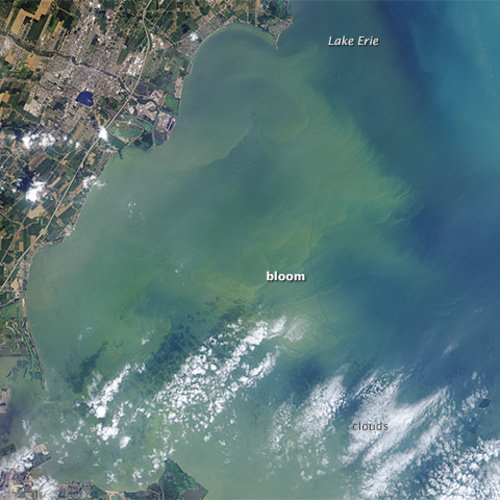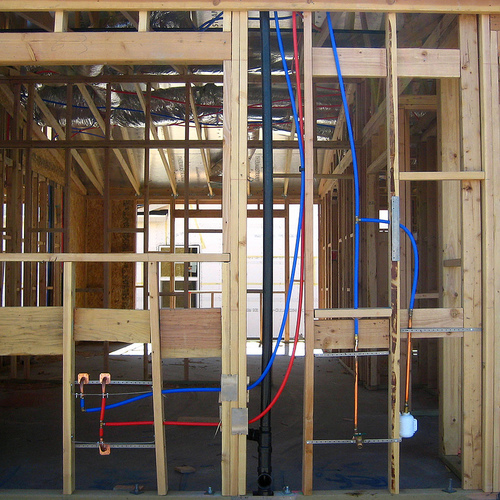
Image Credit: National Institute of Standards and Technology
Plastic building products are no strangers to controversy. But at least one of the concerns dogging the use of plastic pipes in green buildings is now being addressed by scientific research.
Andrew Whelton, an assistant professor in the department of civil engineering at the University of South Alabama, recently announced that the National Science Foundation awarded a $298,000 grant to his researcher team to determine the degree to which plastic piping installed in green buildings impacts drinking water odor and chemical quality. Whelton and Alexandra Stenson, an associate professor of chemistry at the school, are the lead researchers on the project, titled “Towards a Safer and Greener Indoor Environment: Chemical Liberation from Polyethylene Plumbing Pipe.”
In an abstract summarizing the rationale for the grant, the National Science Foundation noted that “green building initiatives and the U.S. Green Building Council are driving increased installation of high-density polyethylene (HDPE) and cross-linked polyethylene (PEX) potable water pipe into buildings to reduce PVC material use. Despite continued HDPE and PEX pipe installation, little is known about how U.S. polyethylene-based pipes affect drinking water quality, and data from Europe cannot be directly translated because of differences between pipe formulations and manufacturing practices. At present, little data are available on the conditions that result in worst-case contaminant release from U.S. polyethylene potable water pipe. Moreover, little is known about which chemical and polymer properties best predict contaminant release potential, practically nothing about long-term drinking water quality impacts, and no U.S. data are available from actual plumbing systems.”
An in-the-field component
The essence of Whelton and Stenson’s study, then, will be to identify the contaminants, polymer properties, and environmental conditions from new and laboratory-aged pipes, as well as from pipes already installed in building plumbing systems, that have significant effects on drinking water quality.
Among the already-installed pipes that will be part of the analysis are those in the National Institute of Standards and Technology’s’s net-zero-energy test home in Gaithersburg, Maryland. The four-bedroom 2,700-sq.-ft. building, which attracted a blizzard of publicity (including a news article on GBA) when it was unveiled in mid-September, is set on a spacious lot and looks like what one might find in a suburban tract development. (The project’s suburban-model design and setting irritated Treehugger design editor Lloyd Alter, who complained that “the greenest house in the tract suburb still performs worse than another in a denser, transit-oriented community. Being Net Zero is meaningless if you can’t even walk to the curb, let alone the mailbox or the grocery store.”)
NIST’s net-zero test house is, like a couple of other government-funded test-home projects, unoccupied, and its operation and performance are, for the most part, managed and monitored remotely. The NIST project does, however, link in a key way to the University of South Alabama study: the performance of building’s plumbing – in particular, the plumbing’s affect on potable water in the NZE home – will be incorporated into Whelton and Stenson’s analysis.
In an e-mail to GreenBuildingAdvisor, Whelton added that another colleague, Rebecca Bryant – managing principal of Watershed LLC, a green-building consultancy that specializes in green building for homes in the deep South – will use data generated by the study in Watershed’s training module for green builders.
Weekly Newsletter
Get building science and energy efficiency advice, plus special offers, in your inbox.













3 Comments
MIddle ground
Seems like if there are concerns about this it'd be relatively simple to run copper to the kitchen cold water outlets, and pex everywhere else, no? Sure people fill a glass from a bathroom sink now and then but unless there's something really nasty I imagine copper to the kitchen would suffice.
Disinfection by-products
There's been a smear campaign against plastic pipe for years, this appears (to me) to be another chapter in that book. There are far worse contaminants allowed to be contained in "potable" water than anything plastic pipe is going to contribute....most notably from the disinfection process itself. Look up the EPA's documentation on disinfection by-products.
PEX etc and Chem compounds released into drinking water
Since I had access to some low cost analysis by GC, I ran some of our water when we first moved in. House is plumbed with PEX, and then plastic connectors. We had noticed odor especially after water had not been drawn for a while (weeks - e.g. in guest bathroom). This is nothing to do with chlorination - no chlorine residual present, since our system doesn't disinfect that way.
Bottom line, there were all sorts of compounds in there, but nothing that flagged up particularly nasty from a toxicology standpoint on EPA screening concentrations (Region IX). There is considerable research already done in Sweden on this topic. It may actually be from the connectors, between the PEX and the fixture.
Bottom line - flush the faucets if they have beeen standing a while, before drawing drinking water or showering.
Log in or create an account to post a comment.
Sign up Log in